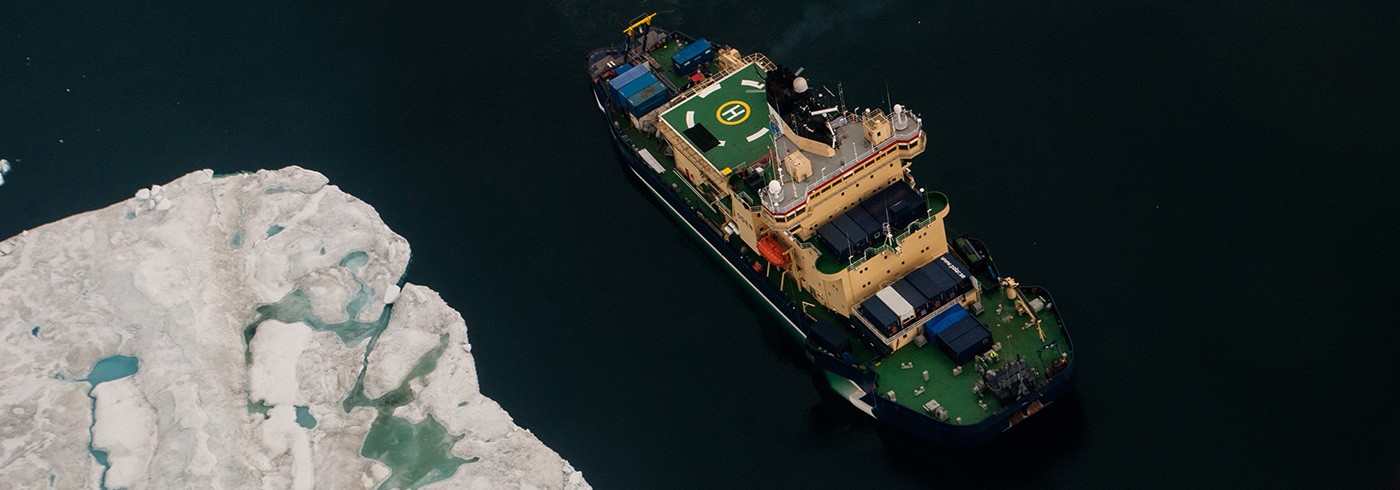Unique measurements from the North Pole show how the sea ice, the atmosphere and the biosphere interact with each other
8 August 2016 - 20 September 2016Large quantities of organic carbon are moving from land into the Arctic Ocean. This carbon has many different sources, among them thawing permafrost, erosion, gas leaks from fissures in the sea floor and from primary production in the oceans, i.e. when plants, algae, and cyanobacteria convert carbon dioxide and water to organic substances with the help of photosynthesis. Parts of this organic carbon can then be broken down and converted into the greenhouse gases methane and carbon dioxide, some of which is released into the atmosphere where it has an impact on the climate.
Almost nothing is known about the composition of the atmosphere and the chemical processes that take place in the atmosphere over the central parts of the Arctic Ocean. By conducting continuous, high-resolution measurements of the flow of methane and carbon dioxide in the atmospheric boundary layer, we can gain a better understanding of the impact of the changing climate on the exchange of gases between the air and the oceans.
During the expedition in the Arctic Ocean, we measured the concentration and flows of methane and carbon dioxide. The measurements were made from the front meteorology mast on the icebreaker Oden with the aid of laser spectroscopy (CRDS), which determines the concentration of gases, and with eddy covariance, which combines extremely fast gas and wind measurements to calculates airborne movement of, for example, heat, pollutants, and other gases.
These types of measurements have never been made before at the North Pole. The data collected is vital if we are to be able to make regional estimations of carbon sources and sinks in the Arctic. Something that was previously unknown, but which the data from this summer’s expedition suggest, is that the sea ice, atmosphere and central Arctic Ocean biosphere strongly interact,, which both has an impact on and is impacted by global warming.


